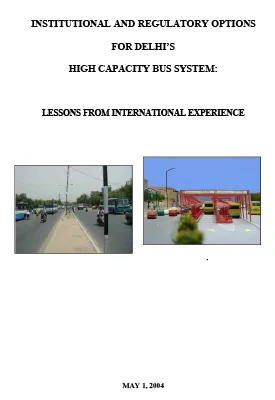While implementation of high capacity bus systems in cities are important in improving bus speeds, reducing operating costs, and reducing conflicts between various travel modes, they could also pave the way for implementing long – term transit reforms. These could be in the form of better connectivity between feeder services, inducing bus fleet modernization and induce greater investment in the transport sector from the private stakeholders etc. Unlike in developed countries where a ridership of 5000 people per day is sufficient for a system to be considered viable, developing countries have ridership reaching up to 20,000 ppdph. In such scenarios, bus systems can only be successful if implemented along with a slew of other institutional reforms that protect public interests and which ensure high quality service in the long run.
Thus this report reviews in depth how significant arrangements in different HCBS projects affect transit service delivery. It draws form examples of developing countries of Latin America, which have proven successful in implementing HCBS and makes recommendations for taking full advantage of the opportunity that an HCBS project provides to leverage some related, transit system reforms, which are critical to the full success of HCBS.
Thus this report reviews in depth how significant arrangements in different HCBS projects affect transit service delivery. It draws form examples of developing countries of Latin America, which have proven successful in implementing HCBS and makes recommendations for taking full advantage of the opportunity that an HCBS project provides to leverage some related, transit system reforms, which are critical to the full success of HCBS.

